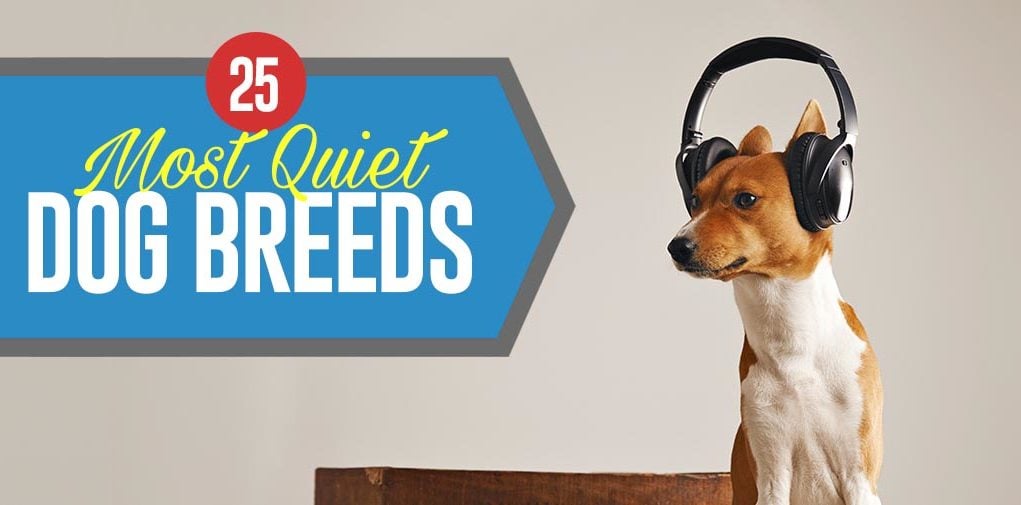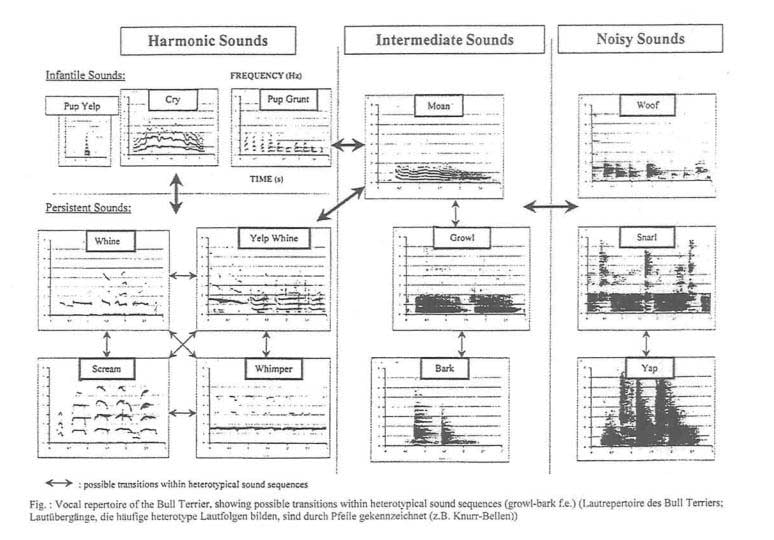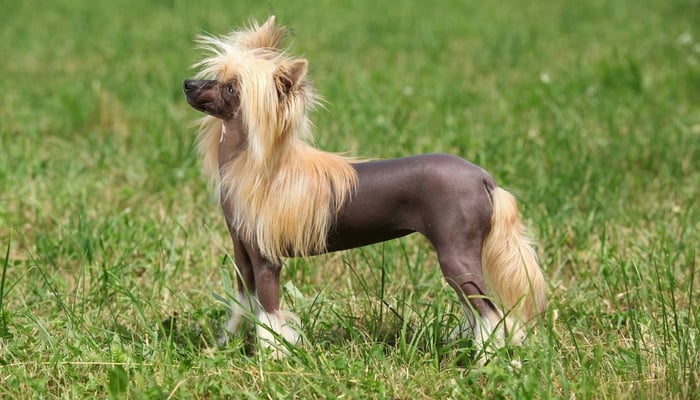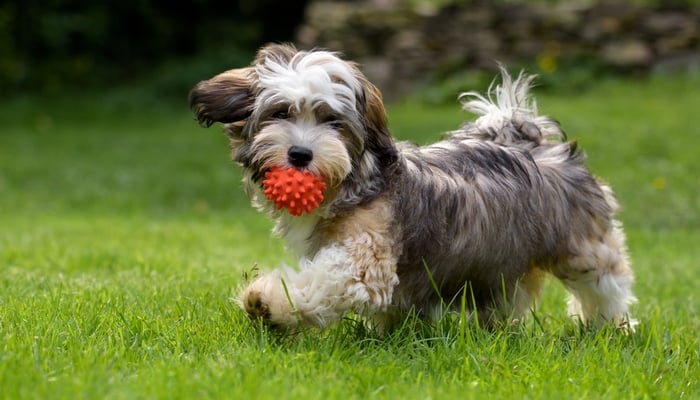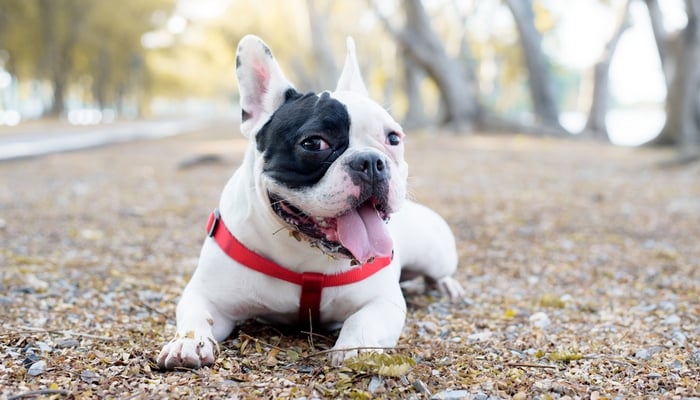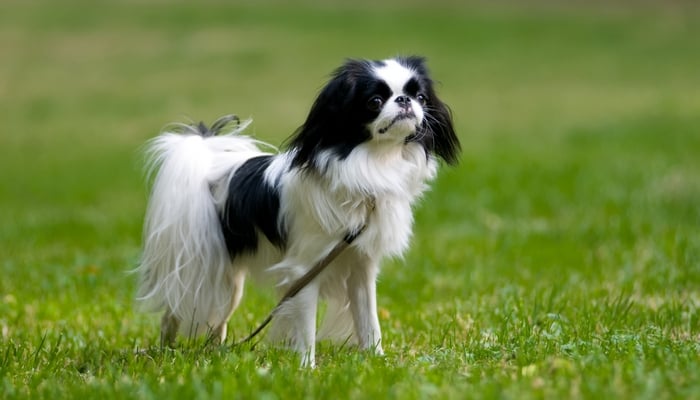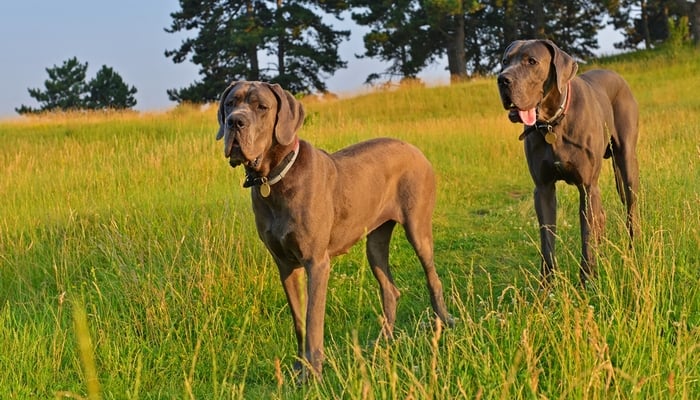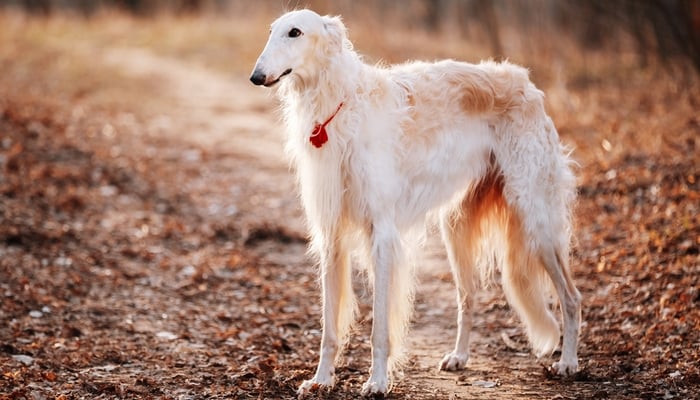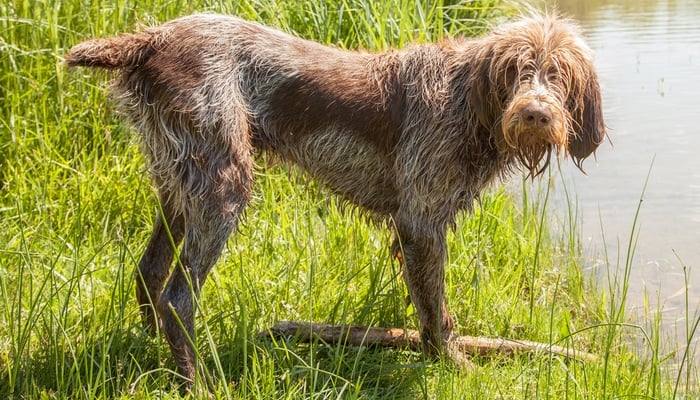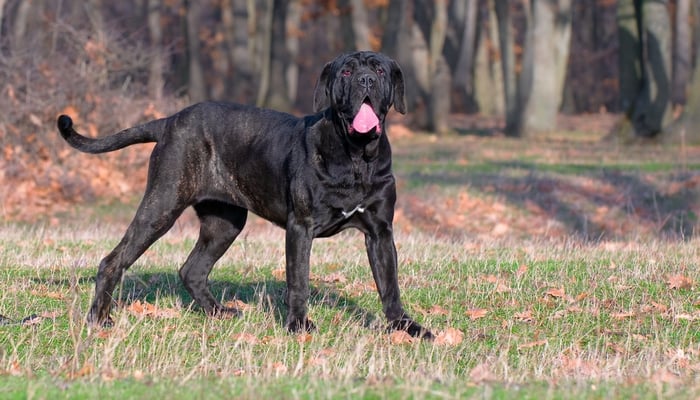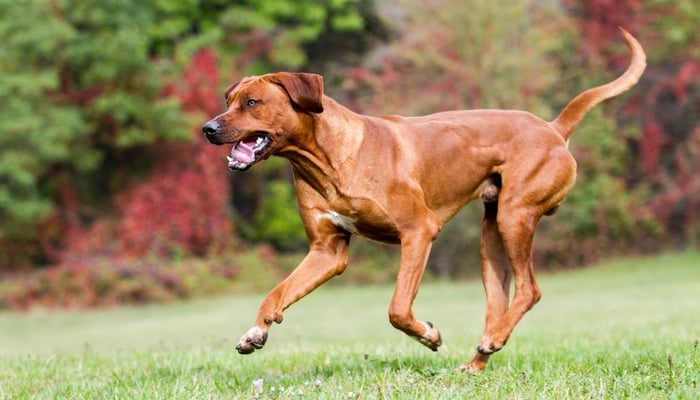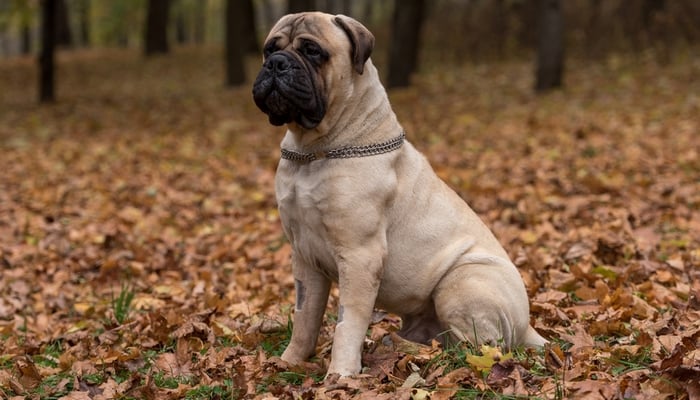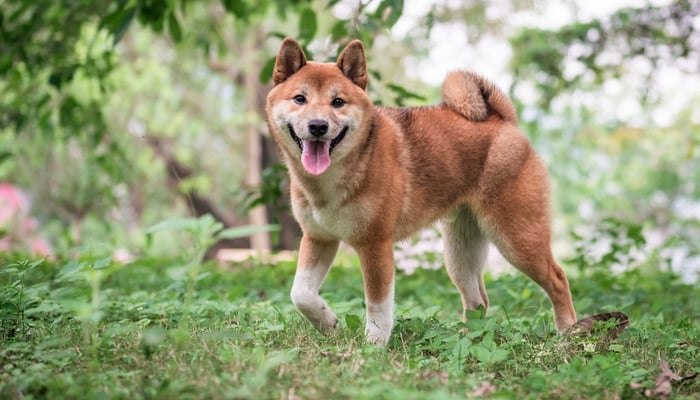Table of Contents
If you're thinking about adopting a dog but live in an apartment, condo or duplex with angry neighbors, a quiet dog breed that doesn't bark often may be your only choice. Some homeowners associations even have rules about barking dogs, and there may be city ordinances that prohibit dog barking noise altogether.
Fortunately, there are dogs that are more quiet and tend to bark less. In fact, there's been plenty of scientific research done in the area of communication in dogs, including barking patterns, frequency ranges and rate of occurrence of many breeds.
Science on Barking Patterns of Different Breeds
Barking in dogs has been proven as a means of communication (1, 2, 3). Dogs bark as a way of alerting, calling to action or simply as a greeting (4). These audible signals have a variable acoustic structure, depending on the breed and the intention of the bark, with the frequency ranging between 160 Hz and 2630 Hz (1, 2).
In a 2010 study, researchers discovered that some family dog breeds tend to bark more whereas others tend to stay silent more often. For example, wolf-like breeds like Basenji, Shar-peis and Chow Chows are some of the most quiet dogs and have a low propensity for barking.
However, the issue of finding a quiet dog isn't as simple as “some breeds bark more.” This largely depends on the type of bark that a breed emits. For example, one breed may bark less but their communication will be louder, more aggressive and with higher frequency; whereas another breed will bark more often, but their barks are quieter and less audibly intrusive.
In a 2000 study (PDF), scientists analyzed not only barking by breed but also all possible types of audible communication breeds produce. Using previous data from a 1979 book on the science of communication in different species, they classified barks as such:
Infantile bark (pup yelp), which is a harmonic sound (240 Hz to920 Hz frequency), that's emitted by the dog spontaneously as a distress call or protest.
Harmonic play bark, which varies from a few wide frequency bands to numerous
narrow bands (160 Hz to 880 Hz frequency). This non-aggressive sound is generally made by the dog in a relaxed state, such as during play time.
“Christmas tree” bark, which was labeled like this because of the appearance on the sonogram of its sequential loss of overtones in the form of a Christmas tree. Poodles exhibited very frequent overlapping, whereas Alaskan Malamutes and GSDs produced a more harmonic sound.
Noisy play bark is a low pitched, short and harsh sound with a sharp rise (peaking at 1206 Hz frequency in Bull Terriers), often released by dogs during the change in behavior, particularly when it's turning into aggressive mode.
Threat bark was the final classification that has the lowest pitch and highest frequency (at 2360 Hz) and was the most abrupt.
Furthermore, because barking in dogs is considered an allelomimetic behavior, researchers found that even quiet dog breeds may bark more when in a group of other dogs (5).
Below are some of the most quiet dogs based on several factors: their propensity to barking, the frequency range of their bark, and types of barks they tend to release most often.
Small Quiet Dogs
(under 25 pounds)
1. Chinese Crested
A hypoallergenic dog, these four-legged family members have a mane of hair, and then a poof on the tail. The rest of the body is hairless. There is also a recessive version, the Powderpuff, which is covered in hair.
You will be happy to know that both versions rarely bark. They are happy go-lucky pups that are satisfied playing with the kids or cuddling on the couch. Prone to separation anxiety, they may whine when left alone.
2. Norwegian Lundehund
These acrobatic canines have toes that are double, and even triple, jointed. They also have extra neck joints that allow them to turn their head around 180 degrees. They can climb cliffs, bookshelves, and fences.
They are hard to handle, but one benefit they have is they rarely bark or howl. More cat-like, they are the strong, silent type. Lunderhounds still make good watch dogs as their wary of strangers and will sound an alarm.
3. Havanese
Developed strictly to be a lapdog, the Havanese has all the great characteristics of a canine that is taken everywhere – including a low desire to bark. Just like people, dogs have different personalities, but if you get a more talkative one, these pups are highly trainable.
As a popular breed, there are many disreputable and irresponsible breeders out there. Make sure you get your pup from a responsible breeder so that the traits of your new dog are predictable.
4. French Bulldog
This quite dog breed is mischievous, fun and entertaining to most owners. Although they are generally quiet, they will bark when people approach their territory (the house), so they still make good watch dogs.
Friendly with everyone in the family, French Bulldogs still need socialization training to curb their sometimes territorial nature. If they do not get this training, they could turn into nuisance barkers.
5. Japanese Chin
Cute and calm, these companion dogs are not your typical lap-dog yapper. They are quite independent and are not always in your face asking for attention; however, they do not like being totally alone, either.
When left alone, they will cry and bark due to separation anxiety. These dogs are said to “sing” (similar to a howl) when company comes or music is playing, so don’t expect them to be a totally silent breed.
6. Bolognese
Another little dog that is calm and reserved, this pooch can adapt to life in many homes. Loving and eager to please, this breed is easy to train – except house-training. So while you may be able to quickly curb any excess noise, expect to be patient with the potty.
Try using puppy potty pads so the mess isn’t everywhere. Like many breeds, the main time that this pet will make noise is when left alone.
7. English Toy Spaniel
Socialization is important for these quite dog breeds, as they can be timid and shy. This timidness can lead to fear. When fearful, dogs will bark more. These pups are calm and do better in homes with older kids and adults.
They may bark and growl when afraid or when pestered, but other than that, they are considered a quiet breed. They prefer to be the only animal in the house. To get the most out of any pet, take their traits into consideration before bringing them home.
8. Italian Greyhound
While not bred with the racetrack characteristics of the Greyhound or Whippet, these little dogs are still prized as companion dogs. They still retain a high prey drive and will bark and give chase to anything that moves.
Dogs in this breed will bark when something doesn’t seem right, but it isn’t an annoying yappy bark. He has a “big dog” bark that is deep and intimidating. Mild mannered, they don’t feel the need to bark often.
Medium Quiet Dogs
(25 to 60 pounds)
9. Basenji
Well known as the “barkless” dog, the Basenji still makes some noise. That noise is described as something like a yodel, but they are still classified with the quiet dogs. While they may not use their mouth for a variety of noises, they will use it to chew.
You must take care to always keep everything put away. Even with training, this breed has trouble curbing that desire. They are an ancient breed from Egypt, and they have the arrogance and independence to match.
10. Border Collie
A traditional herding dog, these canines still try to herd everything – cats, children, other dogs, etc. While doing this, they will make yipping noises – a type of short bark. It's not surprising to see these intelligent and energetic dogs on the list of quiet of dog breeds.
These canines are very smart and need to stay busy. Not only do they need to be physically active, but they need to be mentally active. If they don’t have “jobs” to perform, they can become destructive and loud.
11. Clumber Spaniel
Not a terribly popular breed, this dog still has a lot of great characteristics. One of these is the fact that it hardly ever barks. They will alert you to unusual activity, but they won’t participate in rowdy or nuisance barking.
With the droopy hound dog look perfected, they have a calm, quiet demeanor to match. In fact, they are downright lazy. They still like to play fetch and take walks, but they cannot sustain jogging or running due to hip structure.
12. Chinook
This sled dog is loving and friendly, but you may be surprised to see them on the list of quiet dogs. It never meets a stranger, so its barking is kept to a minimum. They are intelligent and want nothing more than to please their masters. Playful and great with kids, if the Chinook is making racket, it is probably from over-excitement and joy.
That is when he will emit a whining sound. The wining sound and the woo-woos are the only sound you will usually hear from this “talking” fur-baby.
13. Whippet
Nicknamed “the poor man’s greyhound”, these fast, agile dogs are often used for racing. Like their cousin the Greyhound, any unwanted characteristics have been virtually bred out. This means they rarely bark and are not aggressive.
That said, they do retain a high prey drive and will, albeit silently, chase cats, squirrels, cars, and anything else that strikes their fancy. They need a tall fence and a sturdy leash, or alternatively an invisible dog fence. Once they take off, you will not be able to catch them.
14. Saluki
Similar to the Afghan Hound, but with shorter hair, the Saluki is an ancient sight hound. While reserved around strangers, they are not fearful and will not usually bark or growl. This quiet breed is nonetheless energetic.
Care must be taken with small children as this breed cannot easily contain their boisterous play. When running, these dogs can reach 25 mph, so always keep them secured.
Large Quiet Dogs
(over 60 pounds)
15. Black Russian Terrier
Not a typical tiny terrier, these four-legged family members can reach 145 pounds. Bred as guard dogs, these confident canines don’t need to make a lot of noise to make their presence known.
Like a typical guard breed, they are aloof with strangers and can be that way with other dogs. They do not like younger, energetic children. “Blackies” are independent, but they need constant human companionship to keep from becoming loud or aggressive.
16. Great Dane
These slim, muscular dogs are elegant, and big. On their hind legs, they stand taller than most humans. Love-able and friendly, the Dane is not easily frightened and will not start the bark at every little noise; however, they will bark if a stranger is getting too close to its territory.
While mild mannered and calm, these fur-babies still need daily exercise and play to keep from becoming destructive and possibly begin boredom barking. While they are one of the most quiet dogs, they won't be a good fit for owners living in small homes due to their extra large size.
17. Borzoi
This unique looking dog is also one of the most quiet breeds. A typical sighthound, what this dog lacks in vocal ability, he makes up for in speed and agility.
These pooches need a tall, sturdy fence, and must never be off-leash. Not a good watchdog, these pups won’t even bark if an intruder is approaching. While they are gentle and need human companionship, they are awkward around children and need to be socialized.
18. Saint Bernard
Patient and loving, these traditional rescue animals are great with children. Some people even call them nanny dogs. They are true human companions, molding themselves to human life.
They rarely bark or howl, which may surprise you due to their extremely large size. These quiet dogs have virtually no prey drive, either. While they are large, they are great for apartment living as long as they get out to stretch a couple times a day. They are quiet and mild mannered making for a great neighbor. They also won’t bark at every little noise.
19. Bouvier des Flanders
These dogs are strong and large. They are intimidating to anyone who sees them. They may even bark when strangers approach. Other than that, they are mellow, friendly, and gentle.
Making excellent family dogs, they need to learn manners from an early age as they can easily hurt small children on accident. Although they are large, their quiet, calm demeanor means they make great house dogs.
20. Bergamasco
This is the unusual looking dog that many people describe as looking like a mop. They have long, dread-locked hair (unless it's clipped like in the photo above). While he may look like a handful, this canine is mannerly and one of the most quiet dogs.
With that said, he is a guard dog breed and will sound an alarm when necessary. To avoid your pet from becoming physically confrontational, make sure it undergoes, obedience, socialization, and pack leader training from an early age.
21. Neapolitan Mastiff
Looks can be deceiving with this 200 pound lap dog. While the droopy hound dog look does hint at the calm, loving baby inside, this pup while still strike fear into the heart of any would be intruder.
While this canine is one of the most quiet dogs, they will not hesitate to put a stranger in their place with loud, powerful barks. While you may not hear a “Neos” barking sounds very often, you will hear snorting, grunting, and flatulence quiet often.
22. Rhodesian Ridgeback
While this dog is a quiet breed, they are known as the “African Lion Hound” for a reason. Usually this pup is quiet, like a predator himself, but has no problem springing into action to scare off lions, cheetahs and other predators with a fearsome bark.
These strong, muscular canines have the ability to back up those barks as well. Today, they are prized as an adaptable, quiet family dog instead.
23. Bullmastiff
With a breeding for quietly guarding large estates, these pups are still quiet today. While they don’t make a lot of annoying noise, they will drool, and they may annoy you.
Although he is protective and independent, the right owner and trainer can turn these intimidating giants into quiet, calm therapy dogs. They are surprisingly patient with children and sick people.
24. Shiba Inu
While this four-legged family member does not bark much, she will growl. Known to be possessive, they do not do well around kids and other pets. They like to keep their toys, bed, and food well away from any other living thing.
With that said, they will not participate in nuisance barking. These independent, territorial animals need a pack leader trainer and socialization starting from a young age.
25. Akita
Another Japanese breed, the Akita is a popular companion dog and one of the most quiet dogs. Their calm, quiet demeanor makes them great for living with humans. While they don’t usually bark, they do grunt, moan, and mumble.
Their noises are more entertainment than nuisance. Brave and confident, they don’t need to make themselves known with excessive barking. Just remember that these dogs do not do well with children or other pets.
READ NEXT: 30 Silent Dogs Perfect for Apartments or Condos


